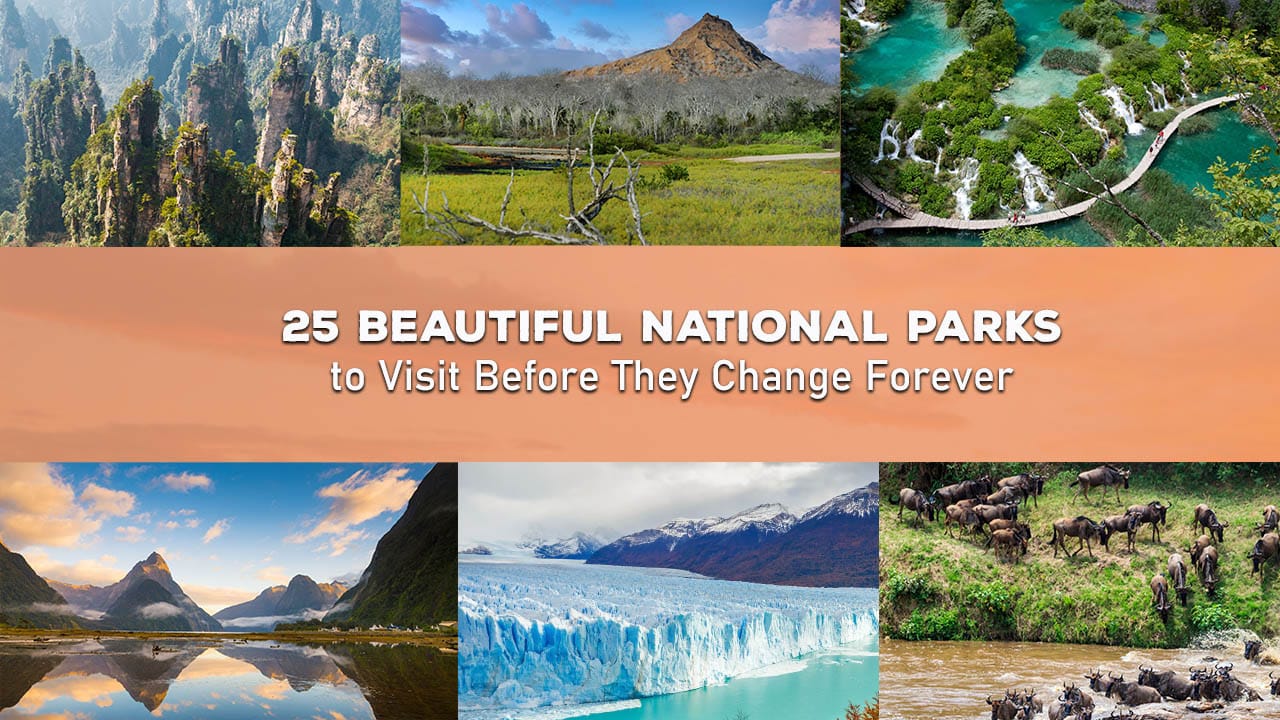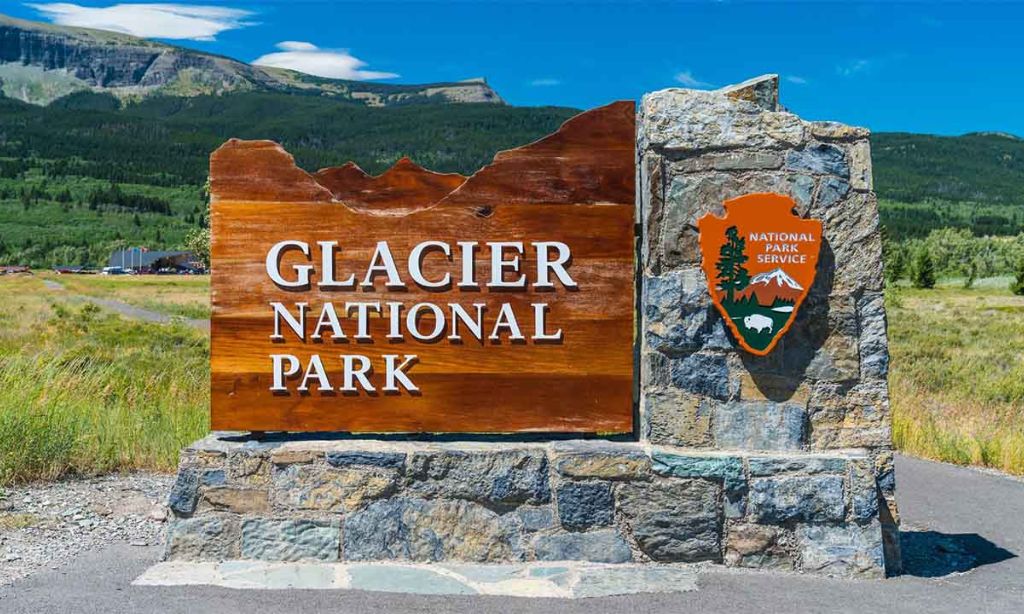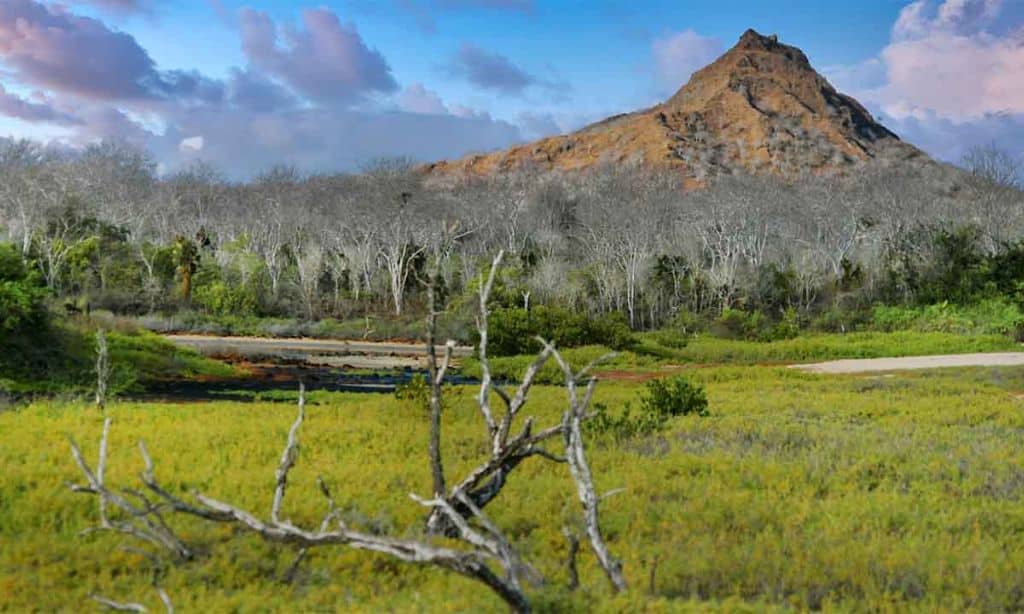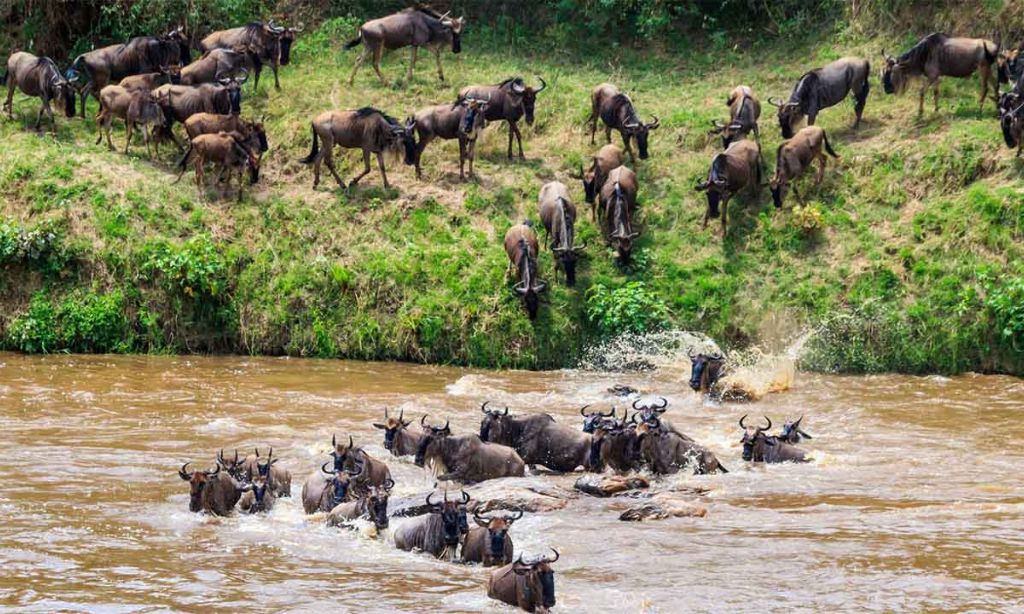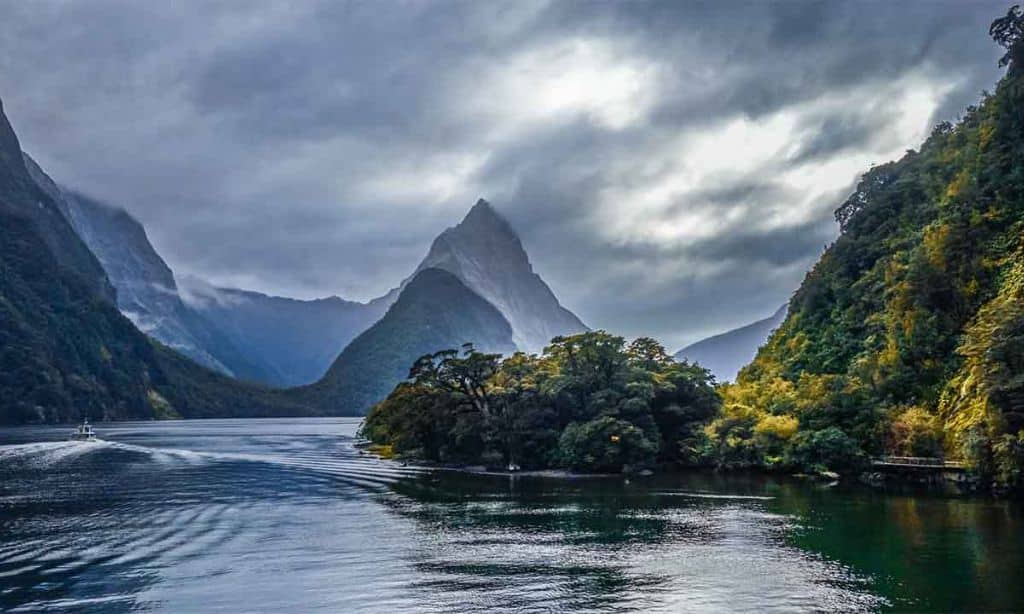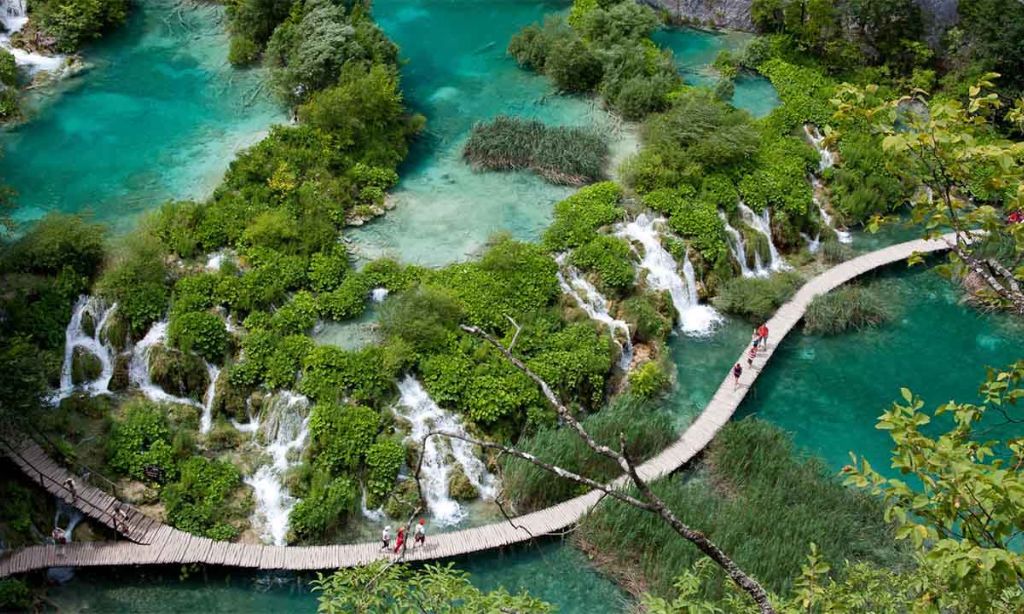Imagine standing atop a glacier-carved peak, wandering through a rainforest teeming with life, or watching the sun set over an endless savanna. National parks offer these experiences and more, preserving the world’s most spectacular landscapes and ecosystems.
But these natural wonders are not static; they’re changing, sometimes rapidly, due to environmental pressures and climate shifts. From the towering sequoias of California to the coral reefs of Australia, each park tells a unique story of nature’s resilience and fragility.
This list invites you to explore 25 beautiful national parks in the world – not just as a traveler, but as a witness to landscapes that may look very different in the years to come.
25 Beautiful National Parks in the World
Our planet is adorned with breathtaking landscapes that showcase nature’s artistry at its finest. National parks stand as guardians of these natural treasures, preserving ecosystems, wildlife, and geological wonders for generations to come. From the mist-shrouded peaks of the Himalayas to the vibrant coral reefs of tropical seas, these protected areas offer windows into the Earth’s diverse beauty.
However, many of these stunning locations face unprecedented challenges from climate change, habitat loss, and increasing human pressure. As these landscapes evolve, sometimes rapidly, the opportunity to experience their pristine beauty becomes ever more precious.
This collection of 25 beautiful national parks invites you on a journey across continents, encouraging you to witness these natural marvels firsthand and understand the delicate balance that sustains them. Each visit not only creates lasting memories but also fosters a deeper connection to our planet and the urgent need to protect these irreplaceable wonders.
1. Glacier National Park, USA: Vanishing Ice Giants
Glacier National Park in Montana is a testament to the raw beauty of ice-carved landscapes. The park’s namesake glaciers, however, are rapidly disappearing due to climate change. The iconic Going-to-the-Sun Road offers breathtaking views of alpine meadows, rugged mountains, and remnants of once-mighty glaciers.
Visitors can hike to Hidden Lake for a stunning vista of the surrounding peaks and possibly spot mountain goats along the way. The park’s diverse ecosystems, from lush forests to tundra, support a wide array of wildlife. But the clock is ticking – scientists predict that the park’s glaciers could vanish entirely by 2030, fundamentally altering this unique landscape.
2. Everglades National Park, USA: A Delicate Water World
The Everglades, often called Florida’s “River of Grass,” is a vast subtropical wilderness unlike any other in North America. This intricate ecosystem of sawgrass marshes, mangrove forests, and hardwood hammocks is home to an incredible diversity of wildlife, including the endangered Florida panther and American crocodile.
Airboat tours offer an exciting way to explore the park’s waterways and spot alligators basking in the sun. However, this fragile environment faces significant threats from climate change and human intervention. Rising sea levels are causing saltwater intrusion, altering the delicate balance of freshwater and marine ecosystems. Visiting the Everglades offers a chance to witness this unique landscape and understand the complex challenges it faces.
3. Yosemite National Park, USA: Granite Wonders and Changing Forests
Yosemite National Park in California is renowned for its towering granite monoliths, thundering waterfalls, and ancient giant sequoias. El Capitan and Half Dome stand as icons of the park, challenging rock climbers and captivating photographers from around the world.
The Mist Trail to Vernal Fall offers hikers an up-close experience with the park’s powerful waterfalls. However, Yosemite is experiencing subtle but significant changes due to climate shifts. Warmer temperatures are affecting snowpack levels, which in turn impacts the park’s famous waterfalls and overall forest health. The changing climate also increases the risk of wildfires, potentially reshaping the landscape in the coming years.
4. Torres del Paine National Park, Chile: Patagonia’s Crown Jewel
Torres del Paine in Chilean Patagonia is a dramatic landscape of jagged mountain peaks, azure lakes, and sprawling ice fields. The park’s centerpiece, the Three Towers of Paine, rises majestically from the Patagonian steppe, creating one of the most photographed mountain vistas in the world.
The famous W Circuit trek takes hikers through diverse terrains, from southern beech forests to glacial moraines. Wildlife enthusiasts can spot guanacos, Andean condors, and if lucky, the elusive puma.
However, the park’s glaciers are retreating at an alarming rate due to global warming, altering the landscape and affecting water resources. Visiting Torres del Paine offers a chance to witness the raw beauty of Patagonia while it still retains its icy crown.
5. Galápagos National Park, Ecuador: Evolution’s Living Laboratory
The Galápagos Islands, which inspired Charles Darwin’s theory of evolution, continue to be a testament to the wonders of adaptive radiation. This remote archipelago is home to unique species found nowhere else on Earth, from giant tortoises to marine iguanas.
Visitors can snorkel with playful sea lions, observe blue-footed boobies performing their mating dance, and walk among prehistoric-looking land iguanas. Each island offers a different landscape, from barren volcanic rocks to lush highlands. However, the Galápagos face numerous challenges, including rising sea temperatures, introduced species, and increasing tourism pressure.
The delicate balance that allowed these unique species to evolve is under threat, making a visit to these islands both a privilege and a call to conservation awareness.
6. Great Barrier Reef Marine Park, Australia: Underwater Wonderland at Risk
The Great Barrier Reef, the world’s largest coral reef system, stretches over 2,300 kilometers off Australia’s northeast coast. This underwater marvel is home to an astounding diversity of marine life, including over 1,500 species of fish and 400 types of hard coral.
Visitors can dive or snorkel to witness the reef’s incredible beauty, from colorful corals to schools of tropical fish, and even spot sea turtles and dolphins. However, the reef is under severe threat from climate change. Rising ocean temperatures have led to widespread coral bleaching events, damaging large sections of this delicate ecosystem.
Ocean acidification and extreme weather events pose additional challenges. Visiting the Great Barrier Reef now offers a chance to appreciate its splendor and understand the urgent need for its protection.
7. Kilimanjaro National Park, Tanzania: Africa’s Disappearing Snowcap
Kilimanjaro National Park is home to Africa’s highest peak and the world’s tallest free-standing mountain. The sight of snow-capped Kilimanjaro rising above the African savanna has long captured the imagination of travelers and adventurers.
Climbing Kilimanjaro is a bucket-list experience for many, offering a journey through five distinct climate zones, from cultivated farmlands to arctic-like conditions at the summit. However, Kilimanjaro’s iconic glaciers and snow cap are rapidly shrinking due to global warming.
Some scientists predict that the mountain could be ice-free within decades, dramatically altering its appearance and ecosystem. A visit to Kilimanjaro now is not just a personal challenge but a witness to climate change in action.
8. Komodo National Park, Indonesia: Home of the Dragon
Komodo National Park, spread across several islands in eastern Indonesia, is famous for its population of Komodo dragons, the world’s largest lizards. These prehistoric-looking creatures roam freely on the islands of Komodo, Rinca, and Padar.
Visitors can take guided treks to observe these fascinating reptiles in their natural habitat. The park also boasts rich marine life, with some of the world’s best diving and snorkeling sites. However, Komodo faces threats from rising sea levels, which could inundate critical dragon habitat, and potential over-tourism. There are ongoing debates about how to balance conservation with visitor access, making now an important time to visit responsibly.
9. Yellowstone National Park, USA: Geothermal Wonders and Ecosystem Shifts
Yellowstone, the world’s first national park, is a geothermal wonderland and a crucial wildlife habitat. The park is famous for its geysers, including Old Faithful, hot springs, and mud pots, all testaments to the powerful forces beneath the Earth’s surface.
Visitors can witness vast herds of bison, spot wolves and grizzly bears, and marvel at the colorful Grand Prismatic Spring. However, Yellowstone’s ecosystems are experiencing significant shifts due to climate change. Warming temperatures are affecting fire patterns, tree line elevations, and animal migration habits.
The park’s thermal features may also be impacted by long-term climate shifts. Visiting Yellowstone offers insight into both geological history and ongoing environmental changes.
10. Serengeti National Park, Tanzania: Stage of the Great Migration
The Serengeti is synonymous with the spectacle of the Great Migration, where millions of wildebeest, zebras, and gazelles move in a cyclical pattern following the rains. This vast savanna ecosystem supports an incredible diversity of wildlife, including lions, leopards, and elephants.
Visitors can witness breathtaking scenes of predator-prey interactions and the sheer abundance of African wildlife. However, the Serengeti faces challenges from climate variability, which could alter rainfall patterns and affect the timing and routes of the Great Migration. Human pressures, including population growth around the park, also pose threats to wildlife corridors. A visit to the Serengeti is a chance to experience one of nature’s greatest shows while it still follows its ancient rhythms.
11. Sagarmatha National Park, Nepal: Everest and Its Changing Face
Sagarmatha National Park, home to Mount Everest (Sagarmatha in Nepali), is a land of dramatic mountains, glaciers, and deep valleys. The park offers some of the most spectacular high-altitude treks in the world, including the journey to Everest Base Camp.
Visitors can experience Sherpa culture, marvel at ancient Buddhist monasteries, and gaze upon the world’s highest peak. However, the region is experiencing rapid changes due to global warming. Glaciers are retreating at an alarming rate, forming unstable glacial lakes and altering the landscape.
The warming climate is also shifting vegetation zones upslope, affecting both wildlife and local communities. A trek in the Everest region today is not just an adventure but a firsthand look at a changing alpine world.
12. Doñana National Park, Spain: Crucial Wetlands Under Pressure
Doñana National Park, located in southwestern Spain, is one of Europe’s most important wetland reserves and a critical stopover site for migratory birds. The park’s diverse landscapes include marshes, sand dunes, and Mediterranean scrubland.
Birdwatchers can observe flamingos, imperial eagles, and countless other species. The park is also one of the last refuges of the endangered Iberian lynx. However, Doñana faces significant threats from drought, intensive agriculture in surrounding areas, and potential impacts from climate change.
Water management in the region is a contentious issue, balancing the needs of wildlife, agriculture, and tourism. Visiting Doñana offers a chance to appreciate the complexity of wetland conservation in a changing climate.
13. Banff National Park, Canada: Rocky Mountain Splendor in Flux
Banff, Canada’s oldest national park, showcases the majestic beauty of the Rocky Mountains. The park is renowned for its turquoise lakes, including the famous Lake Louise, soaring mountain peaks, and abundant wildlife.
Visitors can enjoy scenic drives, challenging hikes, and winter sports against a backdrop of stunning alpine scenery. However, Banff is experiencing noticeable changes due to global warming. Glaciers are retreating, affecting the park’s iconic landscapes and water systems.
Warming temperatures are also impacting plant and animal species distributions, with some mountain-dwelling creatures facing habitat loss. A visit to Banff today offers both natural splendor and insights into the subtle but significant changes occurring in mountain ecosystems.
14. Kruger National Park, South Africa: Big Five and Changing Savannas
Kruger National Park is one of Africa’s largest game reserves and a premier safari destination. The park is home to an impressive diversity of wildlife, including the “Big Five” – lions, leopards, rhinos, elephants, and buffalos.
Visitors can embark on self-drive safaris or guided game drives to observe animals in their natural habitat. However, Kruger faces challenges from climate change, including altered rainfall patterns and rising temperatures. These changes affect vegetation, water availability, and animal behavior.
The park is also at the forefront of anti-poaching efforts, particularly for rhinos. A visit to Kruger offers not just wildlife viewing but an understanding of the complex issues facing African conservation.
15. Fiordland National Park, New Zealand: Majestic Fiords and Fragile Ecosystems
Fiordland National Park, located on New Zealand’s South Island, is known for its dramatic landscapes of steep fiords, rainforests, and waterfalls. Milford Sound, with its towering Mitre Peak, is the park’s most famous attraction.
Visitors can take boat cruises through the fiords, spotting seals and dolphins, or hike on world-renowned trails like the Milford Track. However, Fiordland faces pressures from increasing tourism and the impacts of climate change. Rising sea temperatures and changing weather patterns could affect the park’s unique marine and terrestrial ecosystems.
The park is also grappling with the challenge of balancing tourism growth with conservation. A visit to Fiordland is a journey through some of the world’s most pristine wilderness, with an underlying message of careful stewardship.
16. Los Glaciares National Park, Argentina: Land of Ice Giants
Los Glaciares National Park in Patagonia is home to some of the world’s most impressive glaciers, including the famous Perito Moreno Glacier. This vast ice field is one of the few glaciers in the world that is still growing, bucking the global trend of glacial retreat.
Visitors can witness the spectacle of massive ice chunks calving from the glacier’s face into Lake Argentino. The park also offers stunning hiking opportunities in the Fitz Roy range, with its iconic needle-like peaks. However, even here, climate change is taking its toll.
While Perito Moreno remains stable, many other glaciers in the park are retreating rapidly. A visit to Los Glaciares provides a rare glimpse of a world where ice still shapes the landscape, but for how long remains uncertain.
17. Göreme National Park, Turkey: Otherworldly Landscapes and Ancient History
Göreme National Park in Cappadocia is renowned for its unique “fairy chimney” rock formations and ancient cave dwellings. This surreal landscape was shaped by volcanic eruptions and millions of years of erosion.
Visitors can explore underground cities, witness sunrise over the valley from a hot air balloon, and stay in cave hotels carved into the soft rock. The park is also home to important Byzantine art in rock-cut churches. However, this delicate landscape faces threats from both natural erosion and human impact. Increased tourism has put pressure on the fragile ecosystem and historical sites.
Climate change may accelerate erosion processes. Visiting Göreme offers a chance to step into a landscape that seems almost alien, while understanding the need for careful preservation.
18. Jiuzhaigou Valley National Park, China: Jewel-toned Lakes and Waterfalls
Jiuzhaigou Valley in China’s Sichuan province is famous for its multi-level waterfalls, colorful lakes, and snow-capped peaks. The park’s water features are renowned for their vivid blue and green hues, created by calcium carbonate deposits.
Visitors can walk on elevated boardwalks over crystal-clear lakes and witness the impressive Nuorilang Waterfall. However, Jiuzhaigou faces challenges from earthquakes and tourism pressure. A 2017 earthquake caused significant damage, leading to temporary closure.
The park is also grappling with how to manage large numbers of visitors while preserving its pristine environment. A visit to Jiuzhaigou is a chance to see one of China’s most beautiful landscapes as it recovers and adapts to new realities.
19. Kakadu National Park, Australia: Ancient Lands and Living Culture
Kakadu National Park in Australia’s Northern Territory is a place of immense ecological and cultural significance. It’s home to abundant wildlife, ancient rock art, and living Aboriginal culture.
Visitors can cruise on Yellow Water Billabong to spot crocodiles and birds, view millennia-old rock paintings, and learn about the world’s oldest living culture from traditional owners. However, Kakadu faces threats from climate change, including sea level rise which could inundate freshwater wetlands with saltwater.
Invasive species and changes in fire regimes also pose challenges. A visit to Kakadu offers insights into both ancient and modern ways of caring for the land.
20. Plitvice Lakes National Park, Croatia: Cascading Lakes and Fragile Beauty
Plitvice Lakes National Park is famous for its series of 16 terraced lakes, joined by waterfalls that extend into a limestone canyon. The lakes are renowned for their distinctive colors, ranging from azure to green, grey, or blue.
Visitors can walk on wooden footbridges and pathways that snake around the edges of and across the top of the waterfalls. However, Plitvice faces significant challenges from overtourism and climate change. The increase in visitors has led to concerns about damage to the sensitive travertine barriers that create the lakes.
Changes in temperature and precipitation patterns could affect the delicate balance of the lake system. A visit to Plitvice is a chance to witness one of Europe’s most beautiful water landscapes while it still retains its magic.
21. Sundarbans National Park, India and Bangladesh: World’s Largest Mangrove Forest
The Sundarbans, straddling the border of India and Bangladesh, is the world’s largest contiguous mangrove forest and home to the famous Bengal tiger. This UNESCO World Heritage site is a complex network of tidal waterways, mudflats, and small islands.
Visitors can take boat safaris through the narrow creeks, potentially spotting tigers, crocodiles, and a variety of birds. However, the Sundarbans is under threat from rising sea levels, which could submerge significant portions of the forest.
Coastal erosion, reduced freshwater flow, and increasing salinity pose additional challenges. A visit to the Sundarbans offers a unique glimpse into a rich but fragile ecosystem that plays a crucial role in coastal protection.
22. Tikal National Park, Guatemala: Ancient Maya Metropolis in the Jungle
Tikal National Park protects one of the largest and most important sites of Maya civilization. The ancient city’s towering pyramids rise above the dense rainforest canopy, creating an awe-inspiring blend of nature and human history.
Visitors can climb temple-pyramids for panoramic views, spot howler monkeys and toucans, and imagine life in this once-bustling metropolis. However, Tikal faces threats from looting, deforestation in surrounding areas, and the impacts of climate change on the tropical forest ecosystem.
Changing rainfall patterns could affect the stability of the ancient structures and the forest that has protected them for centuries. A visit to Tikal is a journey through time, offering perspectives on both ancient ingenuity and modern conservation challenges.
23. Virunga National Park, Democratic Republic of Congo: Gorillas in the Mist
Virunga National Park, Africa’s oldest national park, is home to about a third of the world’s remaining mountain gorillas. The park’s diverse landscapes include active volcanoes, savannas, and dense forests.
Visitors can trek to observe gorilla families in their natural habitat, climb an active volcano, and witness the dedication of park rangers who risk their lives to protect the park. However, Virunga faces severe threats from armed conflict, poaching, and pressure from oil exploration. The park’s location in a region of political instability makes conservation efforts particularly challenging.
A visit to Virunga is not just a wildlife experience but a testament to the courage and resilience of those working to protect one of Africa’s most precious natural treasures.
24. Wrangell-St. Elias National Park, USA: America’s Largest and Wildest
Wrangell-St. Elias in Alaska is the largest national park in the United States, covering an area larger than Switzerland. It’s a land of superlatives, with nine of the 16 highest peaks in the U.S. and some of the largest glaciers outside the polar regions.
Visitors can take bush plane flights for breathtaking aerial views, hike on glaciers, and explore abandoned copper mining towns. However, like much of Alaska, Wrangell-St. Elias is experiencing rapid changes due to global warming. Glaciers are retreating, permafrost is thawing, and vegetation patterns are shifting.
These changes affect not only the landscape but also the wildlife and local communities that depend on the park’s resources. A visit to Wrangell-St. Elias offers a chance to experience true wilderness and witness the dramatic effects of climate change in the far north.
25. Zhangjiajie National Forest Park, China: Inspiration for ‘Avatar’ Landscapes
Zhangjiajie National Forest Park in China’s Hunan Province is known for its towering sandstone pillars, lush forests, and misty valleys. The park’s unique landscape reportedly inspired the floating mountains in the movie “Avatar.
Visitors can ride the world’s longest cable car, walk on glass skywalks with vertigo-inducing views, and hike through forested canyons. However, Zhangjiajie faces challenges from mass tourism and its environmental impacts. The influx of visitors has led to concerns about erosion, litter, and disturbance to wildlife.
Air pollution from nearby cities also threatens the park’s pristine environment. A visit to Zhangjiajie offers a chance to step into a landscape that seems almost too fantastical to be real, while also understanding the delicate balance between tourism and conservation.
Takeaways
These 25 beautiful national parks in the world represent some of the most extraordinary natural and cultural heritage sites. Each faces unique challenges, many exacerbated by climate change and human impact.
Visiting these parks responsibly not only offers unforgettable experiences but also raises awareness about the urgent need for conservation. As these landscapes continue to change, sometimes dramatically, the time to witness their beauty and support their preservation is now.


